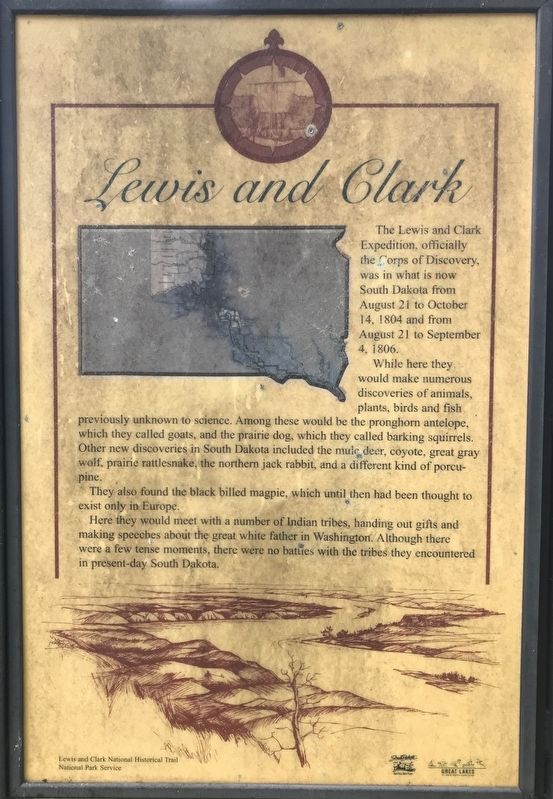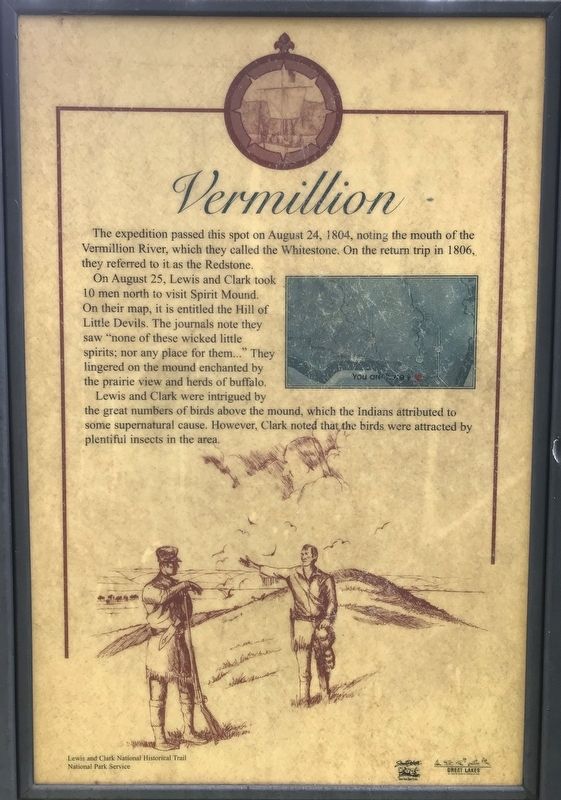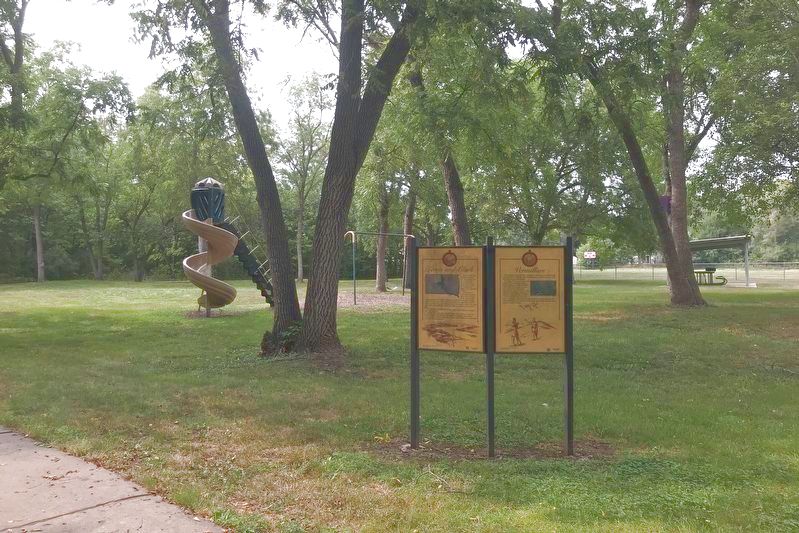Vermillion in Clay County, South Dakota — The American Midwest (Upper Plains)
Lewis and Clark / Vermillion
— Lewis and Clark National Historical Trail —
Lewis and Clark
The Lewis and Clark Expedition, officially the Corps of Discovery, was in what is now South Dakota from August 21 to October 14, 1804 and from August 21 to September 4, 1806.
While here they would make numerous discoveries of animals, plants, birds and fish previously unknown to science. Among these would be the pronghorn antelope, which they called goats, and the prairie dog, which they called barking squirrels. Other new discoveries in South Dakota included the mule deer, coyote, great gray wolf, prairie rattlesnake, the northern jack rabbit, and a different kind of porcupine.
They also found the black billed magpie, which until then had been thought to exist only in Europe.
Here they would meet with a number of Indian tribes, handing out gifts and making speeches about the great white father in Washington. Although there were a few tense moments, there were no battles with the tribes they encountered in present-day South Dakota.
Vermillion
The expedition passed this spot on August 24, 1804, noting the mouth of the Vermillion River, which they called the Whitestone. On the return trip in 1806, they referred to it as the Redstone.
On August 25, Lewis and Clark took 10 men north to visit Spirit Mound. On their map, it is entitled the Hill of Little Devils. The journals note they saw "none of these wicked little spirits; nor any place for them..." They lingered on the mound enchanted by the prairie view and herds of buffalo.
Lewis and Clark were intrigued by the great numbers of birds above the mound, which the Indians attributed to some supernatural cause. However, Clark noted that the birds were attracted by plentiful insects in the area.
Erected by National Park Service, U.S. Department of the Interior.
Topics and series. This historical marker is listed in these topic lists: Exploration • Native Americans • Waterways & Vessels. In addition, it is included in the Lewis & Clark Expedition series list. A significant historical date for this entry is August 24, 1804.
Location. 42° 46.405′ N, 96° 55.904′ W. Marker is in Vermillion, South Dakota, in Clay County. Marker can be reached from South Dakota Street, 1˝ miles south of State Route 50, on the right when traveling south. The marker stands within Cotton Park in Vermillion. Touch for map. Marker is in this post office area: Vermillion SD 57069, United States of America. Touch for directions.
Other nearby markers. At least 8 other markers are within walking distance of this marker. Vermillion (a few steps from this marker); Confluence of the Vermillion and Missouri Rivers (within shouting distance of this marker); Welcome to Cotton Park (within shouting distance of this marker); Grand Lodge Constitution Site (approx. 0.2 miles away); Site of the First Permanent School House in Dakota Territory (approx. 0.2 miles away); Old Vermillion (approx. 0.2 miles away); Downtown Vermillion (approx. 0.4 miles away); The First Baptist Church, Vermillion, South Dakota (approx. 0.4 miles away). Touch for a list and map of all markers in Vermillion.
Credits. This page was last revised on January 13, 2023. It was originally submitted on August 9, 2021. This page has been viewed 298 times since then and 72 times this year. Last updated on December 6, 2021. Photos: 1, 2, 3. submitted on August 9, 2021. • Devry Becker Jones was the editor who published this page.


